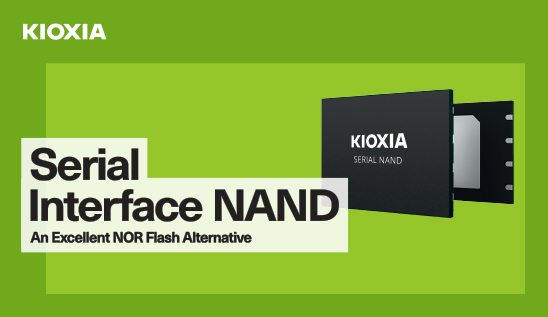
SLC NAND was the very first NAND flash that was developed – and it is still widely used today. Here at KIOXIA, not only do we remain committed to supporting SLC – we continue to innovate to enable new classes of applications. Take our second-generation Serial Interface NAND, for example. Built on 24nm SLC NAND process technology, Serial NAND steps in to provide an excellent alternative to an older type of flash – NOR flash.
Why is this important? NOR flash memory has commonly been used in consumer and industrial devices. However, in order to support the new, enhanced features found in embedded devices, larger memory densities are needed. This is especially true in IoT and communications applications, where product miniaturization means that flash memory is required – in the smallest, highest density package possible. Additionally, microcontroller manufacturers are moving away from the high-pin-count parallel address/data bus in favor of lower-pin-count interfaces, making the need for SPI NAND even more important.
That’s where Serial NAND comes in. When compared to NOR, Serial NAND gives users a higher density, more cost-effective solution. Compatible with the widely used Serial Peripheral Interface (SPI), KIOXIA’s second-generation Serial NAND can be used in a wide range of consumer and industrial applications that require high-speed data transfers, including flat screen TVs, printers, wearable devices, and robots.
Ready to learn more about Serial NAND’s role as an excellent NOR flash replacement? Click here for our new infographic.
All company names, product names and service names may be trademarks of their respective companies.
Disclaimer
The views and opinions expressed in this blog are those of the author(s) and do not necessarily reflect those of KIOXIA America, Inc.